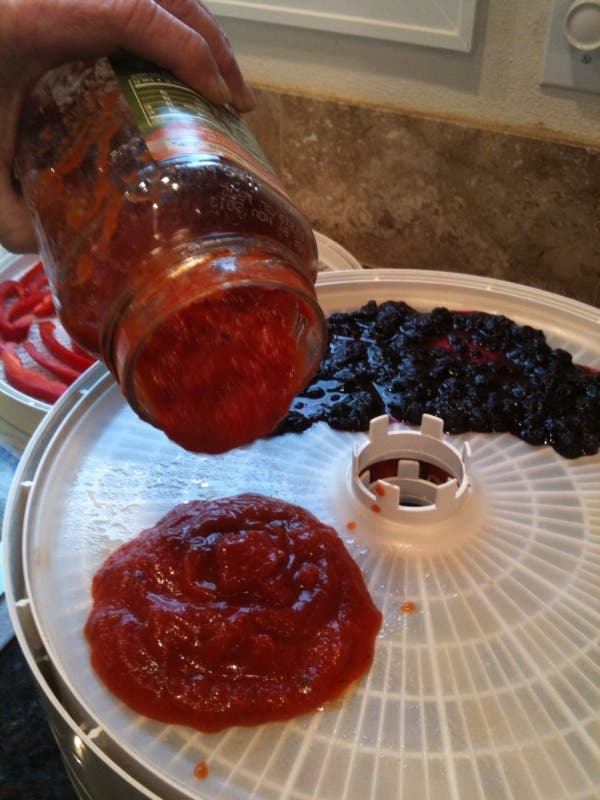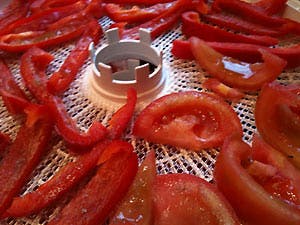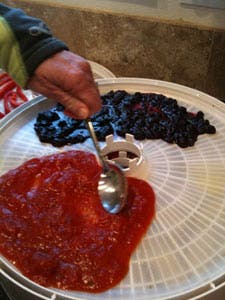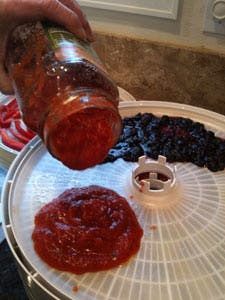Trail Chef: Gourmet Cooking on $5 a Weekend







At some point in your backpacking career, you’ve probably heard a self-professed backcountry gourmet rave about food dehydrators and the wondrous concoctions she’s made with dried fruits and veggies. (Usually, right after she sniffs at your favorite recipe.) And you’ve probably rolled your eyes and thought, “Drying food? Sounds snobby and complicated, and who has the time?” Well, Trail Chef is here to tell you that it’s worth a try.
As a fan of all things cheap, light, and tasty—and an ardent opponent of making any camping experience complicated—I promise you that buying a food dehydrator is the simplest and quickest way to take your backcountry recipes from two stars to four. You can upgrade any trail snack instantly, pack healthier foods that would usually go bad (or get bruised), and reduce pack weight significantly. Here are my top five tips based on more than a decade of drying everything from blueberries to salmon jerky.
1. Buy a dehydrator: Yes, you can dry foods in a standard oven set to 125°F (leave the door open slightly), but the circulating air in a commercial device does a faster and more even job. You also get trays specifically made for drying sauces, fruits, jerkies, and more. Trail Chef is a big fan of the American Harvest Snackmaster; models range from $44 to $70.
2. Slice it thin: The first thing everyone makes is dried fruit. And with good reason: Apple slices, pineapple rings, berries, and other sweet treats are a great way to carry dense calories and vitamins and spruce up bland GORP. You’ll nail these on your first try, because the Snackmaster comes with clear instructions—and it’s easy. Next up is usually jerky, which takes a few tries to master (hint: buy the leanest meat or fish you can find). For all of these foods, my best piece of advice is to cut your sections thinner than the books recommend. You might wind up a bit on the crunchier side with your apples (leave the skins on—yum), but the fruits and especially the jerkies will last longer in the field. They also dry faster and more evenly if you cut ¼-inch slices rather than the typical 3/8-inch.
3. Experiment with exotics: Why settle for regular bananas when you can wow your hiking buddies with the incredibly rich, sweet flavor of baby bananas? Or accept beef jerky when you serve a spicy salmon (douse the strips with your favorite hot sauce before drying) or wild boar jerky (order it from a butcher)? My all-time favorite dried fruit is kiwi, which gets so intensely tart that you can suck on one ring for 20 minutes while and not exhaust its flavor.
4. Spice it up: Tabasco on your salmon jerky is just a start. Next time you’re in the spice aisle, check out the flavored salts and sugars. Trail Chef has discovered that a tiny pinch of green chile sugar (yes, it exists!) sprinkled pre-drying on apples and pears will create the most popular snack in camp. In fact, on my last trip, the kids picked these slices out of the GORP before I had a chance to eat a single one. Another favorite: Smoked sea salt (popular in the Northwest) on dried peppers, tomatoes, and jerky. If the exotic spices are too much of a hassle, try something simple, like cayenne on your pineapple chunks, or brown sugar on your bananas.
5. Hit the sauce: Yes, it’s easy to dry liquids. And this is where the weight savings really add up (not to mention the recipe possibilities). One of Trail Chef’s simplest tricks is to pour a jar of pasta sauce on the Snackmaster tray on a Wednesday night after work. By Thursday night, the sauce will be dry, and will peel off easily (spray the tray with Pam first). Pack it in a zip-top bag and rehydrate in warm water in camp (takes 5 minutes)—and there’s a pound-plus you didn’t have to carry. Once you master simple sauces, move on to fun stuff like fruit leather. Trail Chef buys 1-pound bags of frozen berries, thaws and purees them, and dries the mixture just like a pasta sauce. The results is a nicely textured, fresh-tasting version of the expensive strips you see in the grocery.
Do you have more dehydrating tips? Drop them in the comments below!